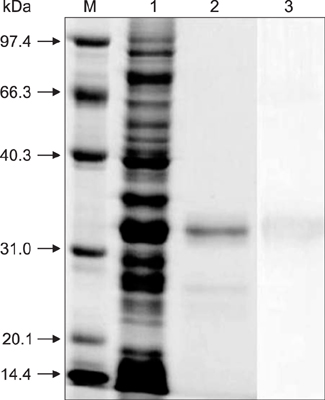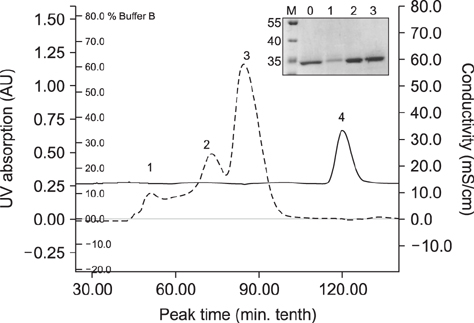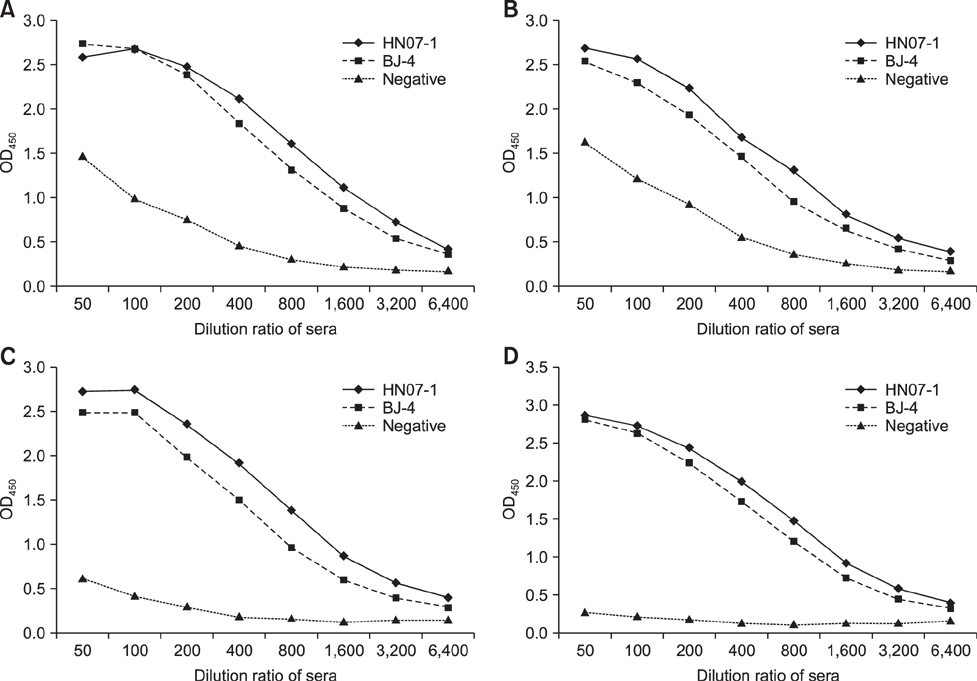J Vet Sci.
2017 Aug;18(S1):307-313. 10.4142/jvs.2017.18.S1.307.
Effect of the fourth nucleotide at the 3′ end of neuraminidase and matrix viral genomic RNA on the pathogenicity of influenza virus A/PR/8/34
- Affiliations
-
- 1Laboratory of Avian Diseases, College of Veterinary Medicine, Seoul National University, Seoul 08826, Korea. kimhong@snu.ac.kr
- 2Laboratory of Poultry Production Medicine, College of Veterinary Medicine, Seoul National University, Seoul 08826, Korea.
- 3Research Institute for Veterinary Science, College of Veterinary Medicine, Seoul National University, Seoul 08826, Korea.
- 4Farm Animal Clinical Training and Research Center, Institutes of Green Bio Science and Technology, Seoul National University, Pyeongchang 25354, Korea.
- 5Division of Antimicrobial Resistance, Center for Infectious Diseases, National Research Institute of Health, Korea Centers for Disease Control & Prevention (KCDC), Cheongju 28159, Korea.
- 6Department of Infectious Diseases & Avian Diseases, College of Veterinary Medicine, Chonbuk National University, Iksan 54596, Korea.
- KMID: 2412555
- DOI: http://doi.org/10.4142/jvs.2017.18.S1.307
Abstract
- Twelve nucleotides located at the 3"² end of viral genomic RNA (vRNA) are conserved among influenza A viruses (IAV) and have a promoter function. Hoffmann's 8-plasmid reverse genetics vector system introduced mutations at position 4, C nucleotide (C4) to U nucleotide (U4), of the 3"² ends of neuraminidase (NA) and matrix (M) vRNAs of wild-type A/PR/8/34 (PR8). This resulted in a constellation of C4 and U4 vRNAs coding for low (polymerases) and relatively high (all others) copy number proteins, respectively. U4 has been reported to increase promoter activity in comparison to C4, but the constellation effect on the replication efficiency and pathogenicity of reverse genetics PR8 (rgPR8) has not been fully elucidated. In the present study, we generated 3 recombinant viruses with C4 in the NA and/or M vRNAs and rgPR8 by using reverse genetics and compared their pathobiological traits. The mutant viruses showed lower replication efficiency than rgPR8 due to the low transcription levels of NA and/or M genes. Furthermore, C4 in the NA and/or M vRNAs induced lower PR8 virus pathogenicity in BALB/c mice. The results suggest that the constellation of C4 and U4 among vRNAs may be one of the multigenic determinants of IAV pathogenicity.
MeSH Terms
Figure
Reference
-
1. Compans RW, Dimmock NJ, Meier-Ewert H. Effect of antibody to neuraminidase on the maturation and hemagglutinating activity of an influenza A2 virus. J Virol. 1969; 4:528–534.
Article2. Desselberger U, Racaniello VR, Zazra JJ, Palese P. The 3′ and 5′-terminal sequences of influenza A, B and C virus RNA segments are highly conserved and show partial inverted complementarity. Gene. 1980; 8:315–328.
Article3. de Wit E, Bestebroer TM, Spronken MI, Rimmelzwaan GF, Osterhaus AD, Fouchier RA. Rapid sequencing of the non-coding regions of influenza A virus. J Virol Methods. 2007; 139:85–89.
Article4. de Wit E, Spronken MI, Bestebroer TM, Rimmelzwaan GF, Osterhaus AD, Fouchier RA. Efficient generation and growth of influenza virus A/PR/8/34 from eight cDNA fragments. Virus Res. 2004; 103:155–161.
Article5. Flick R, Hobom G. Interaction of influenza virus polymerase with viral RNA in the ‘corkscrew’ conformation. J Gen Virol. 1999; 80:2565–2572.
Article6. Fodor E, Palese P, Brownlee GG, García-Sastre A. Attenuation of influenza A virus mRNA levels by promoter mutations. J Virol. 1998; 72:6283–6290.
Article7. Hamilton MA, Russo RC, Thurston RV. Trimmed Spearman-Karber method for estimating median lethal concentrations in toxicity bioassays. Environ Sci Technol. 1977; 11:714–719.
Article8. Hoffmann E, Krauss S, Perez D, Webby R, Webster RG. Eight-plasmid system for rapid generation of influenza virus vaccines. Vaccine. 2002; 20:3165–3170.
Article9. Hoffmann E, Stech J, Guan Y, Webster RG, Perez DR. Universal primer set for the full-length amplification of all influenza A viruses. Arch Virol. 2001; 146:2275–2289.
Article10. Hu M, Yuan S, Zhang K, Singh K, Ma Q, Zhou J, Chu H, Zheng BJ. PB2 substitutions V598T/I increase the virulence of H7N9 influenza A virus in mammals. Virology. 2017; 501:92–101.
Article11. Jiang H, Zhang S, Wang Q, Wang J, Geng L, Toyoda T. Influenza virus genome C4 promoter/origin attenuates its transcription and replication activity by the low polymerase recognition activity. Virology. 2010; 408:190–196.
Article12. Kawakami E, Watanabe T, Fujii K, Goto H, Watanabe S, Noda T, Kawaoka Y. Strand-specific real-time RT-PCR for distinguishing influenza vRNA, cRNA, and mRNA. J Virol Methods. 2011; 173:1–6.
Article13. Kim IH, Kwon HJ, Lee SH, Kim DY, Kim JH. Effects of different NS genes of avian influenza viruses and amino acid changes on pathogenicity of recombinant A/Puerto Rico/8/34 viruses. Vet Microbiol. 2015; 175:17–25.
Article14. Lee KH, Seong BL. The position 4 nucleotide at the 3′ end of the influenza virus neuraminidase vRNA is involved in temporal regulation of transcription and replication of neuraminidase RNAs and affects the repertoire of influenza virus surface antigens. J Gen Virol. 1998; 79:1923–1934.
Article15. Martin K, Helenius A. Nuclear transport of influenza virus ribonucleoproteins: the viral matrix protein (M1) promotes export and inhibits import. Cell. 1991; 67:117–130.
Article16. McCauley JW, Mahy BW. Structure and function of the influenza virus genome. Biochem J. 1983; 211:281–294.
Article17. Ping J, Lopes TJ, Nidom CA, Ghedin E, Macken CA, Fitch A, Imai M, Maher EA, Neumann G, Kawaoka Y. Development of high-yield influenza A virus vaccine viruses. Nat Commun. 2015; 6:8148.
Article18. Robertson JS. 5′ and 3′ terminal nucleotide sequences of the RNA genome segments of influenza virus. Nucleic Acids Res. 1979; 6:3745–3757.
Article19. Rutigliano JA, Sharma S, Morris MY, Oguin TH 3rd, McClaren JL, Doherty PC, Thomas PG. Highly pathological influenza A virus infection is associated with augmented expression of PD-1 by functionally compromised virus-specific CD8+ T cells. J Virol. 2014; 88:1636–1651.
Article20. Seong BL, Brownlee GG. Nucleotides 9 to 11 of the influenza A virion RNA promoter are crucial for activity in vitro. J Gen Virol. 1992; 73:3115–3124.
Article21. Solorzano A, Zheng H, Fodor E, Brownlee GG, Palese P, García-Sastre A. Reduced levels of neuraminidase of influenza A viruses correlate with attenuated phenotypes in mice. J Gen Virol. 2000; 81:737–742.
Article22. Wang L, Lee CW. Sequencing and mutational analysis of the non-coding regions of influenza A virus. Vet Microbiol. 2009; 135:239–247.
Article




